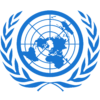Qarabag.com – evidence base of historical rights of Azerbaijanis
Website Qarabag.com is dedicated to the Turkic history of Karabakh. Its creators and authors are a group of young Azerbaijanis who were born to families of natives of Nakhichevan and refugees from the Zangelan and Aghdam regions of Azerbaijan, occupied by Armenia in the 1990s. Some of us live in Baku, others in Moscow and Tyumen.
Since childhood, we have heard stories from our relatives about the horrors of the Karabakh war: the bombing of a passenger bus on the Tbilisi – Aghdam route in 1990, the burning of the Azerbaijani village of Boganis-Ayrim together with its residents in the same year, the death of relatives, night attacks, and the hasty evacuation under the bombing of our parents and grandparents. And when the war started again in Karabakh on September 27, 2020, we saw how fiercely, categorically and uncompromisingly the opposite side promotes its position in social networks. Armenians especially often turn to history: their ancestors were supposedly the first on this land, they always lived there and certainly in the absolute majority. Moreover, this applies not only to High-Karabakh. The same allegedly applies to the Dashkesan, Khanlar, Akstafa, Gedabek, Gazakh regions of Azerbaijan, even Ganja and Nakhichevan autonomy. And so they were driven from all these lands by the bestial Turks, causing a sea of privation and suffering for generations to come. Attempts to object, to tell about our historical rights to this land, about the Khojaly tragedy, the lost relatives, the broken destinies, and not fulfilled hopes for the return of already dead grandparents to their native lands, even from non-Armenians, often ran into distrust, indifference, indifference and accusations of indulging “Aliyev propaganda”.
Unfortunately, like many of our Azerbaijani peers, especially those living abroad, we knew the history of our people too superficially. They had no idea what to refer to in order to defend their position, where to get supporting materials, where to find photos and scans of articles from the first Karabakh war. And without all this, any of our words expressed in discussions on social networks were perceived as fiction, fantasy, propaganda. So we went to the libraries.
All that we have already found there and will certainly find again, we will use in publications on this site. We deliberately try not to refer to books and articles by Azerbaijani authors. It turned out that the historical rights of our people in Karabakh, and presented Armenia’s Zangezur and Yerevan, is a convincing proof of Russian official documents of the Caucasus of the XIX – early XX century, the works of Russian historians and travelers of the time, the materials of Soviet Orientalists from around the world, and even the publication of the Institute of history, Academy of Sciences of the Armenian SSR.
Therefore, each of our articles contains a large number of quotes from primary sources. They are italicized everywhere. Under each piece of information, in square brackets, where it is drawn from-from which document, book, or scientific publication. Moreover, in cases of the most significant information, the source name is given as an interactive link. When you click on this link, a separate window opens in the browser, which contains scans of the pages from which the used quotes are taken, as well as the title page of the corresponding source. To make it easier to find quotes that are given in our articles, the scans are highlighted in red.
All this clearly demonstrates that every fact, every quote, all the conclusions in the articles Qarabag.com -not a figment of our imagination. All this is confirmed by documents and historical evidence (not Azerbaijani at all), the authenticity of which, if desired, is quite easy to verify.
We hope that the huge work we have spent on searching for materials, studying them and preparing publications will not be wasted. Now Azerbaijanis finally have the opportunity to present their position on the Karabakh issue and various aspects of this conflict in a reasoned, well-founded and evidence-based manner in social networks. Use links, copy quotes and statistics with sources, download scans and post them on various pages and communities!
Moreover, those who do not speak Russian, firstly, can read our publications in Azerbaijani, and, secondly, use the articles Qarabag.com when defending their position in English and French.
Finally, one clarification must be made: we believe that the separation of Low-Karabkh and High-Karabakh, produced by the Soviet authorities in the years 1920-1923, was done only in order to artificially create an Armenian enclave in Azerbaijan that in the case of attempted secession from the USSR would be able to provoke inter-ethnic conflict. For the same purpose, the Turkic population of High–Karabakh was consistently squeezed out, Armenians from Armenia and various regions of Azerbaijan were resettled there, and the historical and administrative center of Shusha lost its former status in favor of the then small village of Khan-kendi (Stepanakert). In fact, High-Karabakh and Low–Karabakh have been one integral region for centuries. They were naturally linked by a common history, complemented each other in the production of products and handicrafts, and were part of the same administrative and political entities.
Based on all this, we do not divide Karabakh into two parts, and in all our publications we cover its past as a whole history of the region, which is United from the political, economic, economic and cultural points of view.


